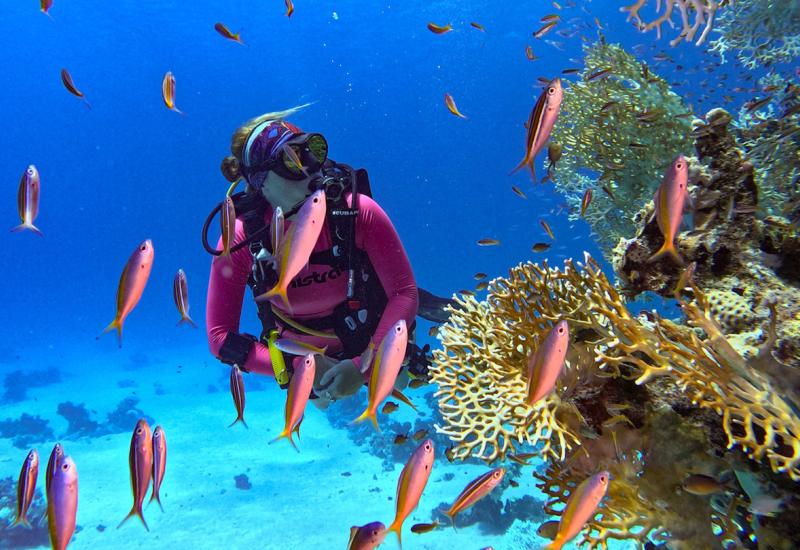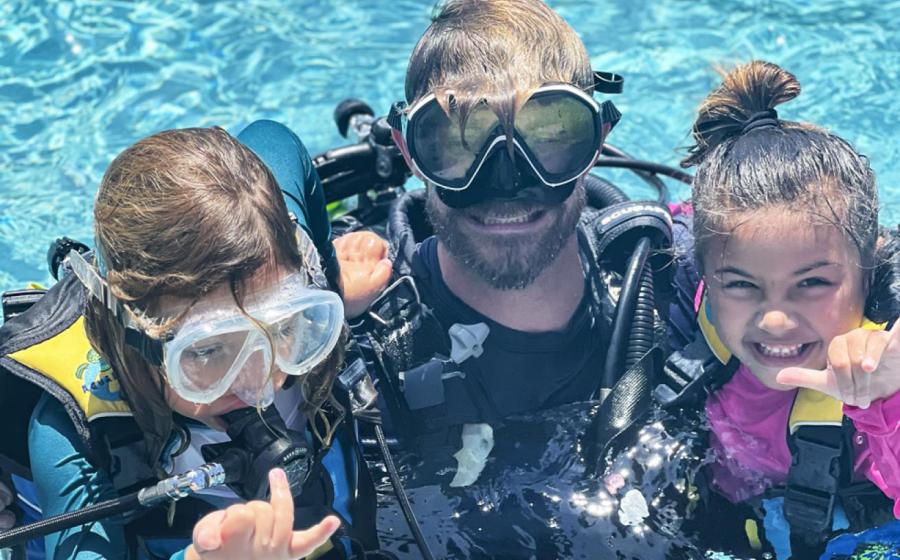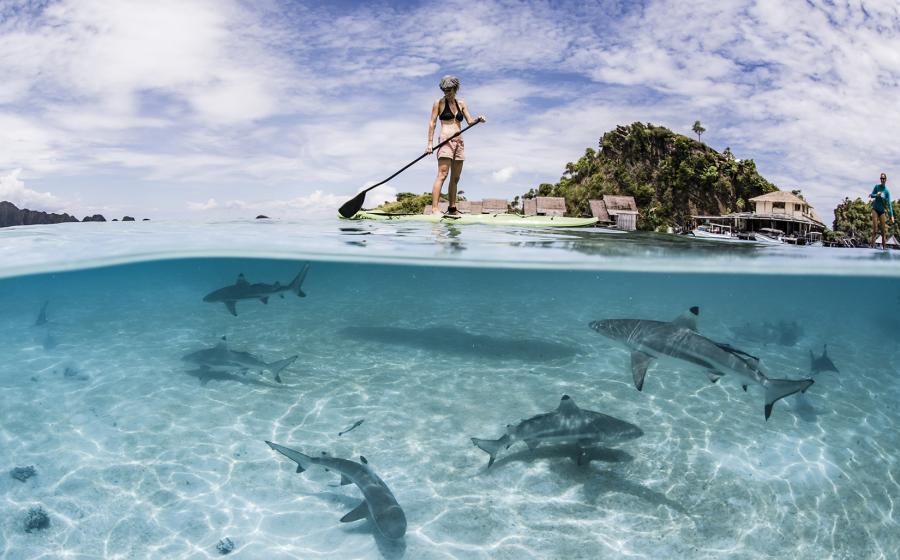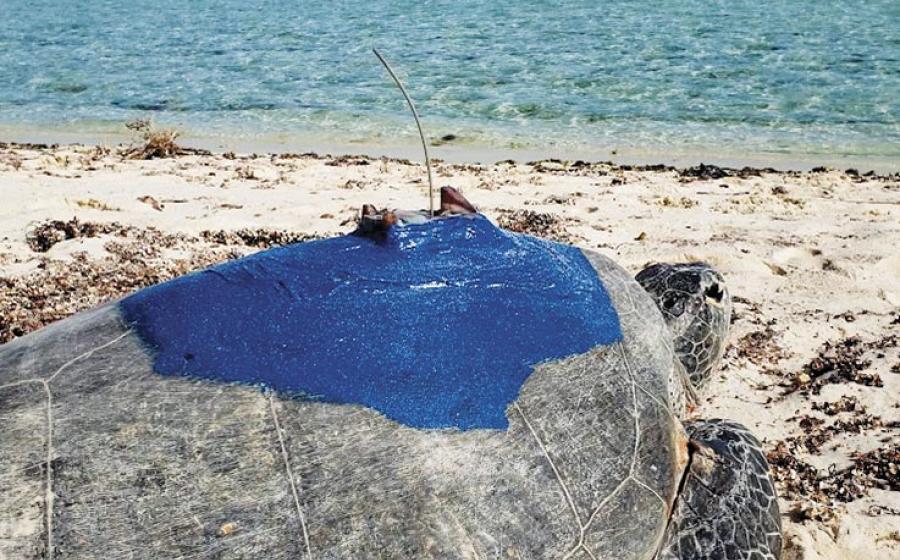Diving Saudi Arabia's Mesmerizing Red Sea
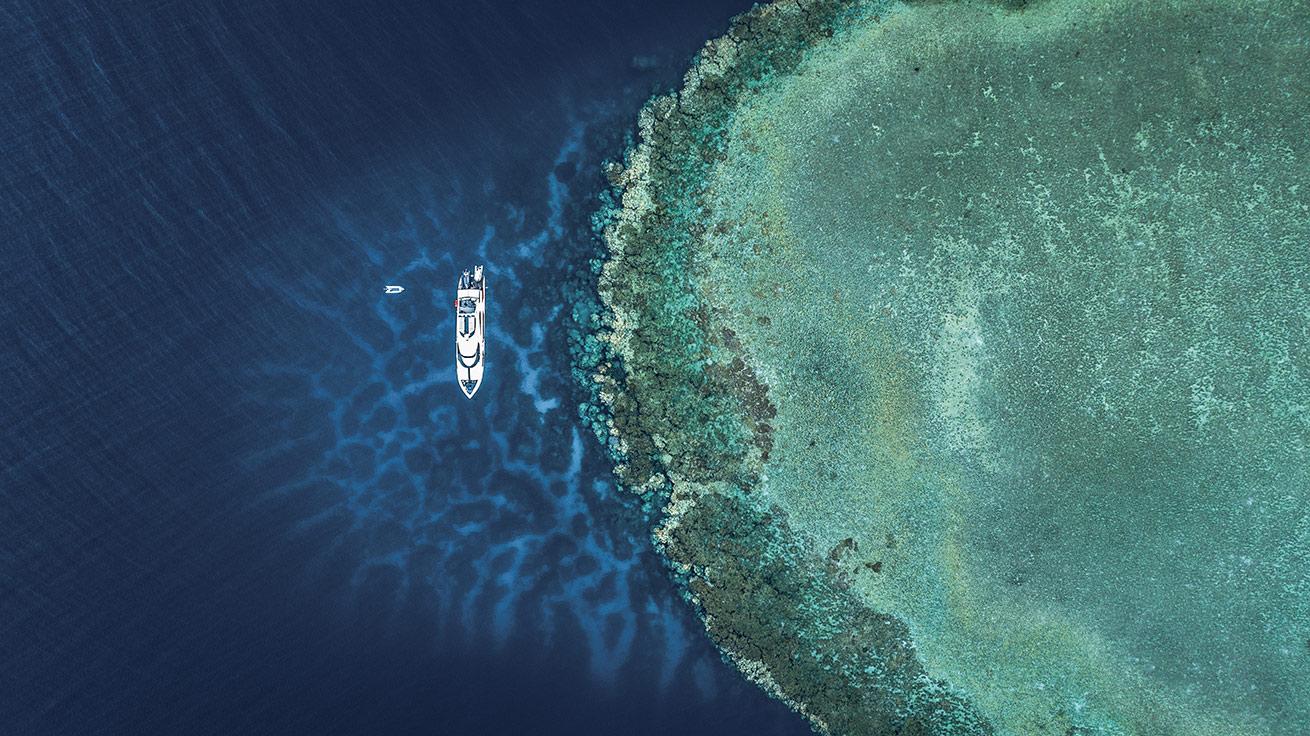
Ahmed GomaaThe Almonda liveaboard visits a dive site at Abu Galawa Reef in the Seven Sisters area.
In the eastern red sea, off the coast of saudi arabia, countless submerged reefs and small islands extend for more than 350 miles from the port of yanbu to the southernmost tip of saudi’s farasan banks. dive sites visited by liveaboard operators here are distinguished by healthy, colorful reefs, pelagic life and numerous wrecks scattered among islands populated by turtles, colonies of birds and small crustaceans.
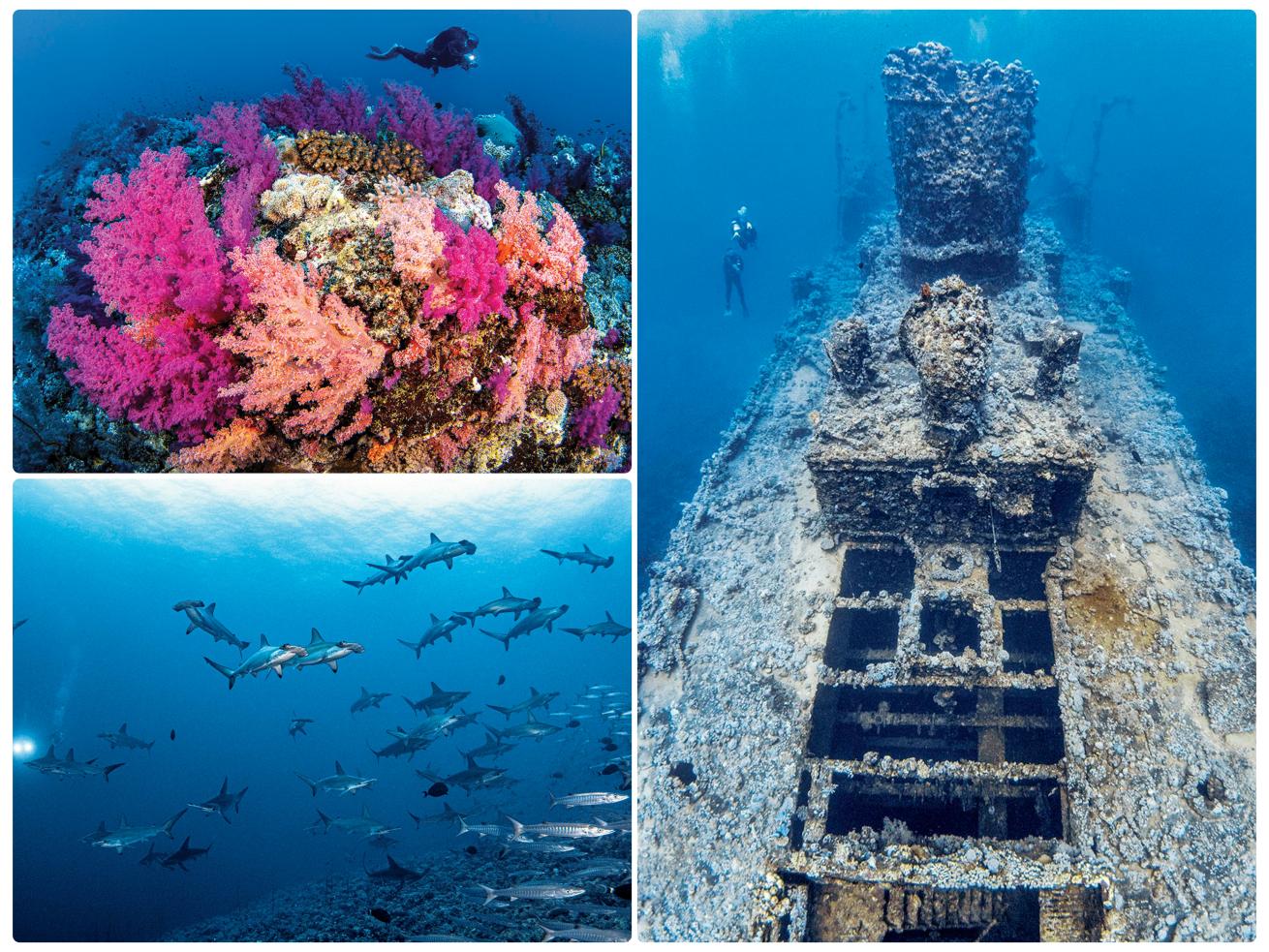
Renata RomeoClockwise: Healthy soft coral at Qadd Humais reef; the wreck of the SS Iona, a British steamship sunk about 8 miles from Yanbu Harbor; a school of hammerhead sharks at Shaab’ammar; A reef in the Farasan Banks.
Red Sea Sampler
Between Yanbu and Jeddah to the south lie the colorful reefs of Five Corals and Seven Sisters, as well as several wrecks, some of which are still intact and lie at shallow depths. Farther south extend the Farasan Banks, a volcanic archipelago with a unique and complex geological history. This vast area is a wide-angle photographer’s amusement park: soft and hard corals; sponges; rays; schools of fish such as jacks and barracuda; turtles; and a variety of sharks. Every dive site here offers the chance to see large marine specimens, but if they do not make their entrance that day, you can still admire the coral reef, always a wonderful spectacle from a visual point of view but also from that of the health of the marine ecosystem as the reef acts as a habitat for countless species of fish, invertebrates and other organisms. The biodiversity of the region is astonishing.
Related Reading: Red Sea Turtle Trackers Discover 34 Seagrass Meadows

Renata RomeoBright-red sponges make for an eye-catching spectacle at Choppy Reef in the Farasan Banks.
Endless Fascination
Most of the sites in the southern reaches of this region are formed by walls with plateaus and rock formations where you can find whitetip shark pups lying on the sand. At overhangs around 100 to 115 feet of depth, divers can find cleaning stations for silky and gray sharks surrounded by schools of jacks. Despite the presence of many pelagic species, the site that surprised me most is Choppy Reef, where peculiar sponges that look like wax dripping from candles cover entire areas of the wall between 50 to 65 feet. The bright red, yellow and white colors and unusual shapes of these sponges make them my favorite models to photograph in this area.
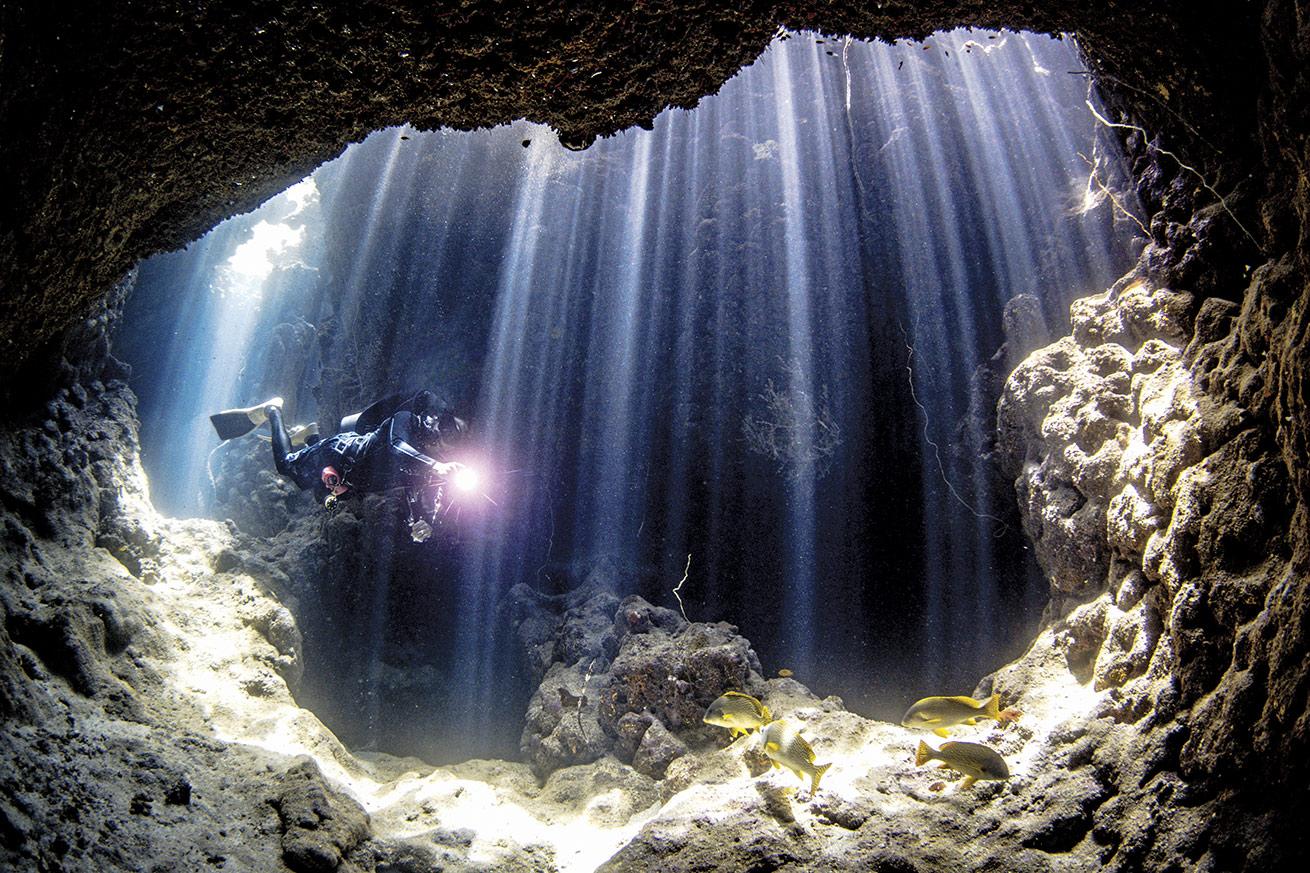
Renata RomeoA diver fins toward the large exit of a cave complex at Suflani Reef just south of Yanbu.
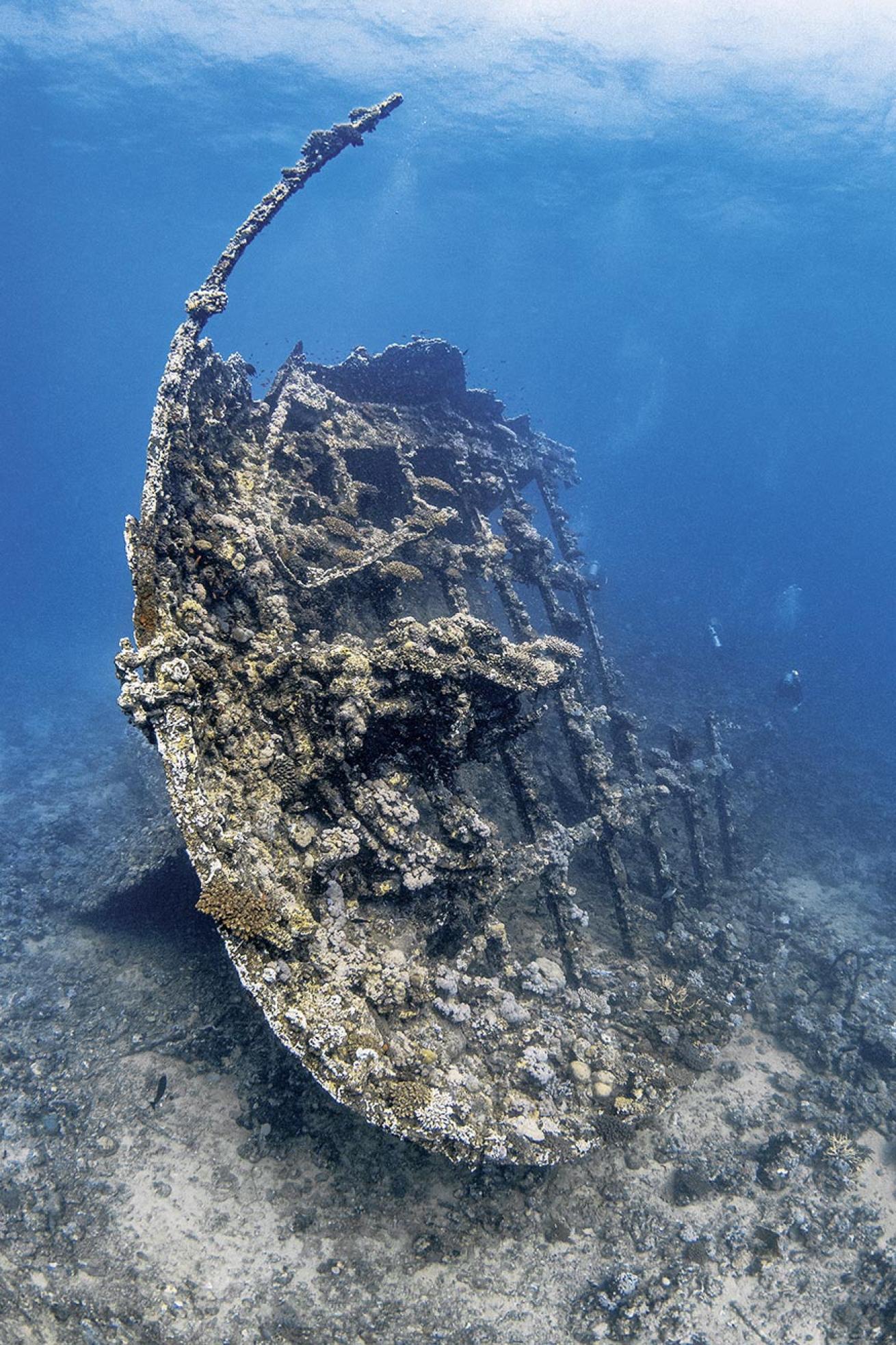
Renata RomeoThe stern of the Boiler Wreck on the Abu Madafi Reef near Yanbu lies at a max depth of 60 feet.
Let the Light In
The northern region encompassing Five Corals and Seven Sisters, more frequented by locals and less by tourists, still offers a healthy and colorful reef, home to corals typical of the Red Sea and pelagic life such as hammerhead and tiger sharks, as well as the presence of numerous wrecks, some of which are still in excellent condition. Suflani Reef is characterized by recesses and cavities in the reef wall at a shallow depth where you can admire the light from above at certain times of the day. You can enter a couple of these recesses. They open up into corridors that cross the reef—the sun’s rays enter the cracks and illuminate parts of the cavities.
More to Discover
Little is known about the numerous wrecks scattered in this area. Some lie in shallow waters near the reef, subjected to the continuous beatings of the waves and corrosion, while others are still well preserved. Among the most frequented and well-known wrecks off the Yanbu coast is the SS Iona, rich in marine life that has settled on it over the years and easily reachable from port with a dayboat. My work and diving partner and I were lucky enough to be tasked with photographically documenting these wrecks for inclusion in the Blue Kingdom diving guide book.
Related Reading: Discover Hidden History With the U-352 Distinctive Specialty Course

Renata RomeoA diver glides through a soft coral formation at Marker 35 in the Seven Sisters area near Yanbu.
Open to Possibilities
Even Jacques Cousteau came to do research in this area in the early 1950s and considered it the wildest and most complex reef area in the entire Red Sea, of great interest not only to photographers and divers but also to lovers of biodiversity and geology to preserve and protect. I invite you to discover it in the coming years while there is not much maritime traffic and there is still a guarantee of being one of few divers at these special dive sites. It is a destination for divers passionate about pelagic life and corals typically found in the Red Sea, photographers eager to immortalize new places, and those curious to discover what few other divers have witnessed. In fact, in recent years, Saudi Arabia has invested heavily in its tourism infrastructure as part of its Saudi Vision 2030 initiative, with the aim of making the country a global tourist destination by developing facilities and services to support diving and other marine activities.
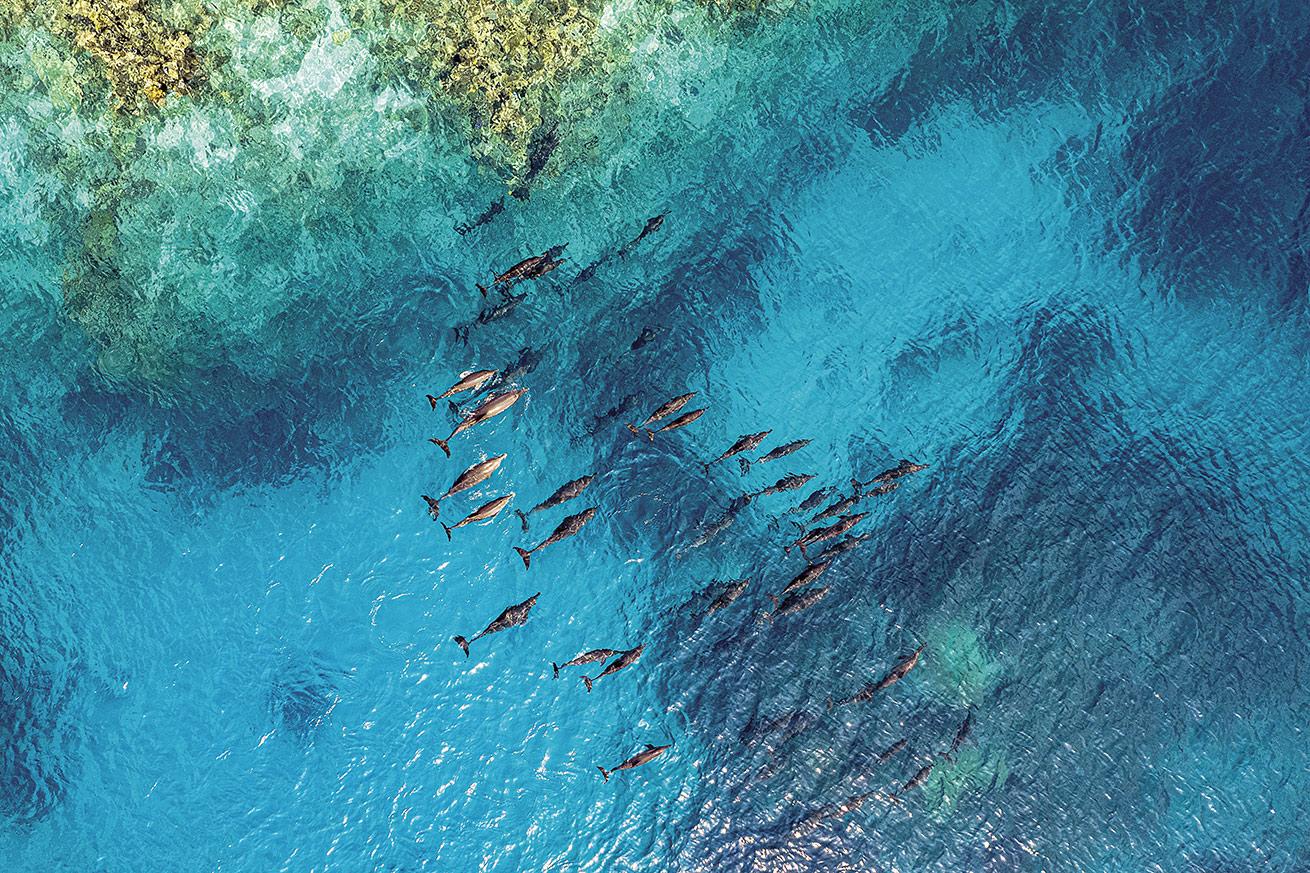
Ahmed GomaaA pod of spinner dolphins swims in a lagoon at the oval-shaped Mubarak Reef in the deep south of the Red Sea.
Need to Know Diving Saudi Arabia Red Sea
When To Go
Peak season in the northern region is all year, except for the summer months. The Farasan Banks are best dived from December to May.
Dive Conditions
Water temperatures in the north average between 75 to 84 degrees, and visibility can reach 100 feet and greater. In the south, the water temperature never drops below 78 degrees. Divers might encounter strong currents and depth while exploring the plateaus.
Operators
Blue Deep Diver (PADI Five Star IDC); Dive Holics (PADI Five Star IDC); Galaxea (PADI Five Star Dive Center); Let’s Dive Saudia (PADI Five Star Dive Center). Visit padi.com/divecenter/saudi-arabia for more.
Travel Tips
> Fly to King Abdulaziz International Airport in Jeddah, where you can organize with local dive centers to do daily trips in the north. Liveaboards can take you south to the Farasan Banks.
> Look for a copy of the brand-new Blue Kingdom Saudi Red Sea diving guide at the dive center, complete with photos by Renata Romeo and Ahmed Gomaa.
> Saudi Arabia’s culture and customs differ from those in Western countries. Do your research beforehand and respect local customs.

